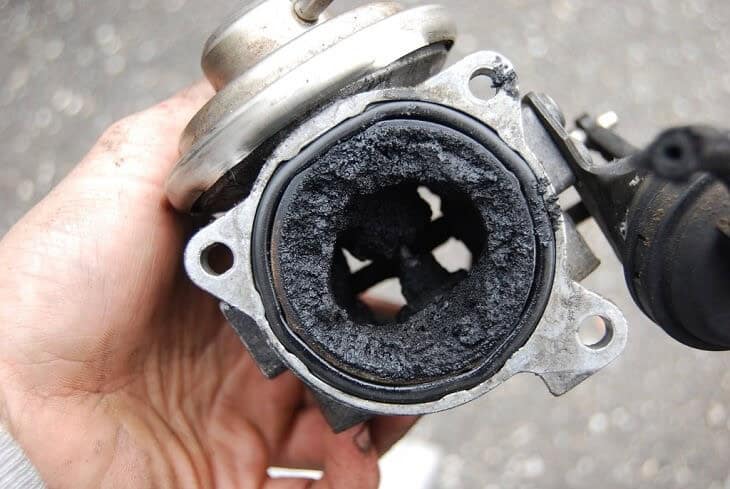Ford: How to Stop Carbon Buildup in Direct Injection Engines
Ford Motor Company continues to be at the forefront of automotive engineering, particularly in addressing one of the most persistent challenges faced by direct injection (DI) engines: carbon buildup on intake valves. This issue, stemming from the lack of fuel washing over the valves in DI systems, has been a focus of Ford research and … Continued
Ford Motor Company continues to be at the forefront of automotive engineering, particularly in addressing one of the most persistent challenges faced by direct injection (DI) engines: carbon buildup on intake valves. This issue, stemming from the lack of fuel washing over the valves in DI systems, has been a focus of Ford research and development efforts.

What is Carbon Buildup?
Before we explore Ford solutions, it’s crucial to understand why carbon buildup occurs in direct injection engines. In traditional port fuel injection systems, fuel is sprayed onto the back of the intake valves, which helps keep them clean. However, in direct injection systems, fuel is sprayed directly into the combustion chamber, bypassing the intake valves. Over time, this can lead to a buildup of carbon deposits on the valves, potentially affecting engine performance and efficiency.
The Ford Multi-Faceted Approach
Ford has implemented a multi-faceted strategy to address carbon buildup, combining innovative engineering solutions with advanced materials and cutting-edge software. Let’s examine these approaches in detail:
Dual Injection Systems
One of the most significant innovations by Ford is the implementation of dual injection systems in some of their EcoBoost engines. This technology combines the benefits of both direct and port fuel injection.
How It Works:
- At lower engine speeds and loads, the port fuel injectors are primarily used, helping to keep the intake valves clean.
- The direct injectors take over at higher speeds and loads, providing the precise fuel control needed for optimal performance and efficiency.
- In some conditions, both systems work simultaneously for maximum power and cleanliness.
Implementation:
Ford has introduced this technology in engines such as the 2.7L EcoBoost V6 used in the F-150 and Edge ST. While not yet implemented in all Ford engines, this technology shows promising results in reducing carbon buildup.
Advanced Valve Coatings
Ford has invested in developing advanced coatings for intake valves to reduce carbon adhesion.
Key Features:
- Nano-scale surface treatments that create a smoother, more resistant surface.
- Thermal barrier coatings that reduce heat transfer to the valve, minimizing the baking of carbon deposits.
Benefits:
In long-term testing, these coatings have been shown to reduce carbon accumulation by up to 30%, significantly extending the time between potential cleanings.
Optimized Combustion Chamber Design
Ford engineers have refined the combustion chamber design to minimize areas where carbon can accumulate.
Design Elements:
- Streamlined intake ports to reduce turbulence and carbon settling.
- Optimized piston crown designs that promote more complete fuel combustion.
Impact:
These design improvements have resulted in a more efficient burn process, reducing the amount of unburned fuel that can contribute to carbon deposits.
Intelligent Oil Control Systems
Ford has implemented advanced oil control systems, acknowledging that oil seepage past valve guides can contribute to carbon buildup.
Features:
- Improved valve stem seals with more durable materials.
- Variable oil pump pressure systems that adjust based on engine load and speed.
Results:
These systems have reduced oil consumption by up to 20% in some EcoBoost engines, indirectly contributing to reduced carbon buildup.
Advanced Engine Control Software
Ford has leveraged its software expertise to develop intelligent engine management systems that help mitigate carbon buildup.
Key Strategies:
- Variable valve timing algorithms that periodically allow for increased valve overlap, promoting a scavenging effect that can help clean the valves.
- Adaptive fuel injection patterns that adjust based on detected carbon buildup levels.
Implementation:
These software solutions are continuously updated and can often be applied to existing engines through dealer-performed software updates.
Enhanced Positive Crankcase Ventilation (PCV) Systems
Ford has redesigned its PCV systems to reduce oil vapor recirculation into the intake, a known contributor to carbon buildup.
Improvements:
- Multi-stage oil separators that more effectively remove oil from crankcase gases.
- Intelligent PCV valve control that adjusts flow based on engine operating conditions.
Effectiveness:
In long-term fleet testing, these enhanced PCV systems reduce oil consumption and carbon buildup by up to 25%.
High-Pressure Fuel Systems
Ford has continually improved its high-pressure fuel systems to ensure optimal fuel atomization.
Advancements:
- Increased fuel rail pressures are reaching 350 bar in some EcoBoost engines.
- Improved injector nozzle designs for finer fuel atomization.
Benefits:
Better fuel atomization leads to more complete combustion, reducing the amount of unburned fuel that can contribute to carbon deposits.
Maintenance Recommendations and Consumer Impact
While technological advancements by Ford have significantly reduced carbon buildup issues, proper maintenance remains crucial for long-term engine health.
Recommended Practices:
- Use of high-quality, top-tier fuels with enhanced detergent additives.
- Adherence to recommended oil change intervals using specified oil grades.
- Periodic use of Ford-approved fuel system cleaners.
Economic Considerations:
- The advanced technologies in Ford engines contribute to their higher initial cost. For example, a 2025 Ford F-150 with the 2.7L EcoBoost engine starts at approximately CAD 45,000.
- However, these technologies can lead to long-term savings:
- Improved fuel efficiency: The 2.7L EcoBoost in the F-150 achieves an estimated 11.2 L/100km combined, potentially saving owners CAD 500-700 annually in fuel costs compared to less efficient engines.
- Reduced maintenance: With less frequent carbon cleaning, owners can save money in cleaning service over the vehicle’s lifetime.
Future Developments
Ford continues to invest in research and development to further mitigate carbon buildup issues. Some areas of focus include:
- Advanced Materials: Development of new alloys and coatings for valve and combustion chamber components that are even more resistant to carbon adhesion.
- Electrification: As Ford moves towards increased electrification, hybrid powertrains offer opportunities to optimize engine operation and reduce conditions that promote carbon buildup.
- Artificial Intelligence: Implementation of AI-driven engine management systems that can predict and prevent carbon buildup more effectively.
- Alternative Fuels: Research into fuels like hydrogen and synthetic fuels that burn cleaner and produce fewer carbon deposits.
Mitigate Carbon Buildup in Ford Engines
The Ford approach to mitigating carbon buildup in direct injection engines showcases the company’s commitment to innovation and engineering excellence. By combining advanced hardware solutions with intelligent software and recommending proper maintenance practices, Ford has significantly reduced the impact of this common issue.
As we look toward the future, a continued investment by Ford in research and development promises even more advanced solutions, ensuring that their engines remain at the forefront of performance, efficiency, and reliability. This means more reliable vehicles with reduced maintenance needs and lower long-term ownership costs for consumers. As automotive technology continues to evolve, efforts by Ford to address challenges like carbon buildup demonstrate the company’s commitment to providing value and innovation to its customers.



